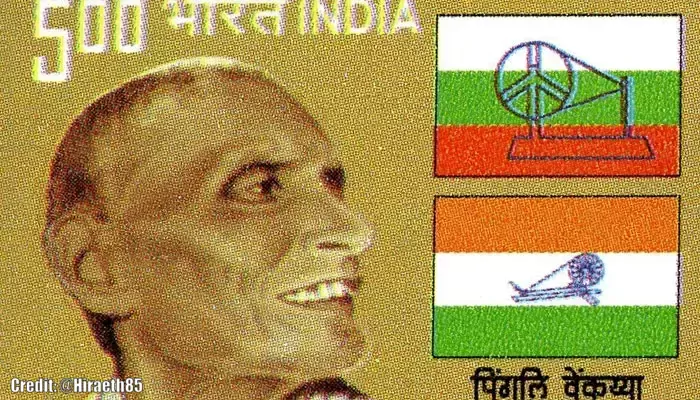
Pingali Venkayya gave India its most powerful symbol — yet history left him behind
Every Independence Day, the tricolour rises high. It moves hearts, anchors ceremonies, and unites millions. But as we salute it, do we pause to ask, who brought this flag to life? Who gave India the banner that would one day wave over a free land?
That man was Pingali Venkayya. And his name should never have faded.
Pingali was born in Pedakallipalli, a small village in Andhra Pradesh's Krishna district. He didn't come from privilege or power, but he was armed with relentless curiosity. His thirst for learning took him all the way to Cambridge. That journey shaped him and altered the course of Indian history.
He served in the Boer War in South Africa, where he crossed paths with Mahatma Gandhi. Something in that encounter struck a chord. While fighting under a foreign flag, Pingali began to question everything. Why must Indians fight under someone else's banner? Why salute symbols that didn't belong to them?
That was the spark.
Back home, he didn't just settle on the idea. He delved into it. He studied flags from across the world — thirty nations, each with stories woven into colour and cloth. For five long years, he immersed himself in books and symbols, trying to crack the code of what a national flag should be.
In 1916, he published A National Flag for India, a blueprint not just of designs but of identity. It was an act of vision, not vanity. Pingali wasn't seeking fame. He aimed to weave India's diversity into one design that could carry the fight for freedom.
Pingali didn't give up after a single attempt. He arrived at Indian National Congress meetings with flag designs in hand, presenting his vision openly. People listened, nodded, and then moved on, but he kept returning.
Finally, in 1921, his opportunity arrived. Gandhi recognised something genuine in Pingali's efforts. A design was debated—a flag featuring red, white, and green stripes, representing India's diverse communities, with a Charkha at the centre symbolising self-reliance.
It wasn't adopted immediately. Yet, it remained in circulation.
By 1931, the Congress Party adopted a version of the tricolour — saffron, white, and green — inspired by Pingali's design. When independence finally came in 1947, a committee led by Rajendra Prasad selected a modified version of Pingali's flag.
The Charkha was replaced by the Dharma Chakra, but the colours stayed the same. So did the spirit. On July 22, 1947, India officially adopted the tricolour, rooted in the vision of a man from a quiet village.
It should have been a proud ending. But history was not fair.
Pingali Venkayya, the man behind the symbol of unity, died in poverty on July 4, 1963. Recognition did not come knocking. Monuments were delayed. His name slipped through the cracks. Decades passed before the nation remembered him again, with a postage stamp in 2009 and a statue later on.
He gave India its flag. India gave him silence.

Each time the flag is hoisted, it represents more than just colour. It bears the weight of dreams, the scars of struggle, and the vision of individuals like Pingali Venkayya — who worked behind the scenes without seeking applause.
It's not merely cloth fluttering in the air. It's a commitment woven into stripes.